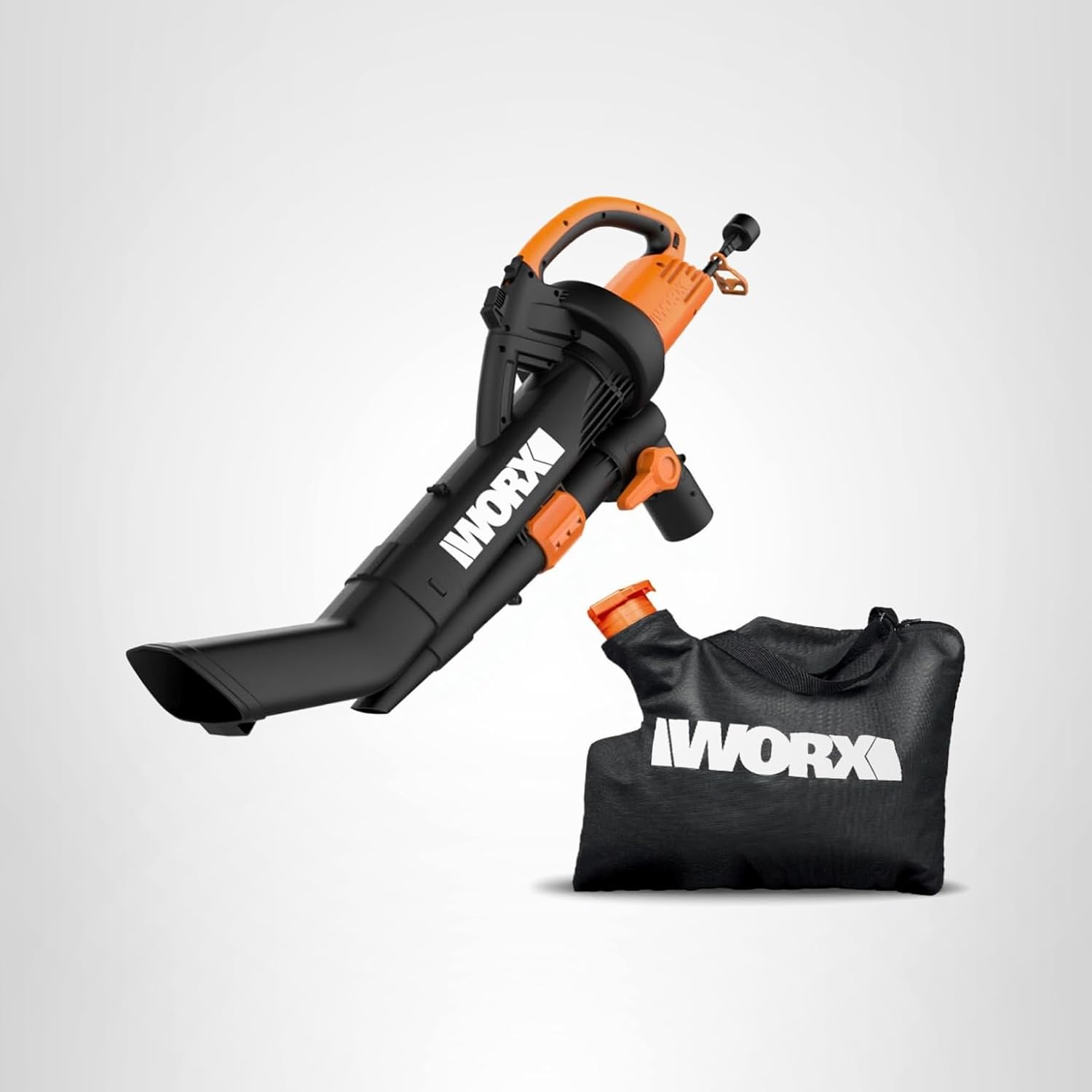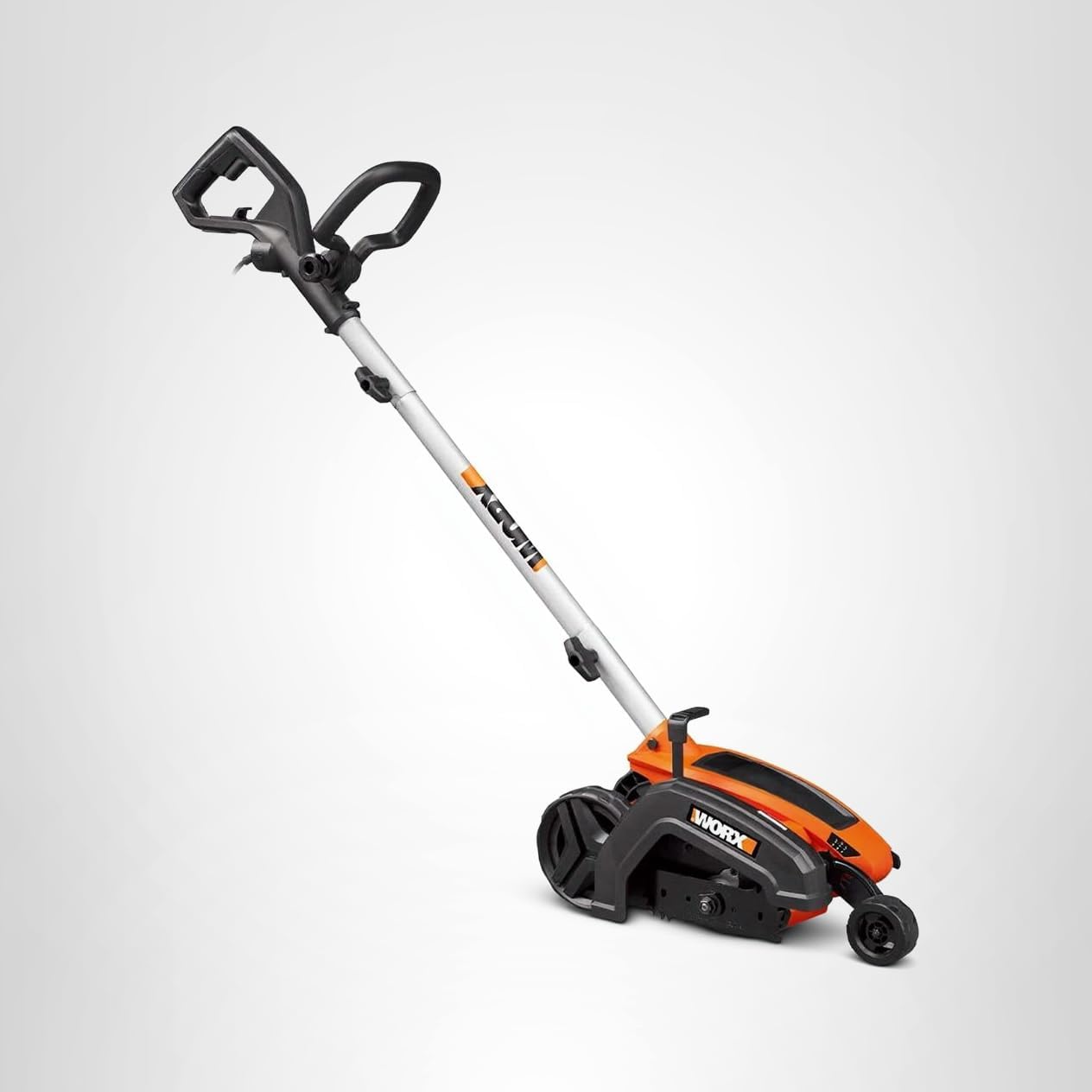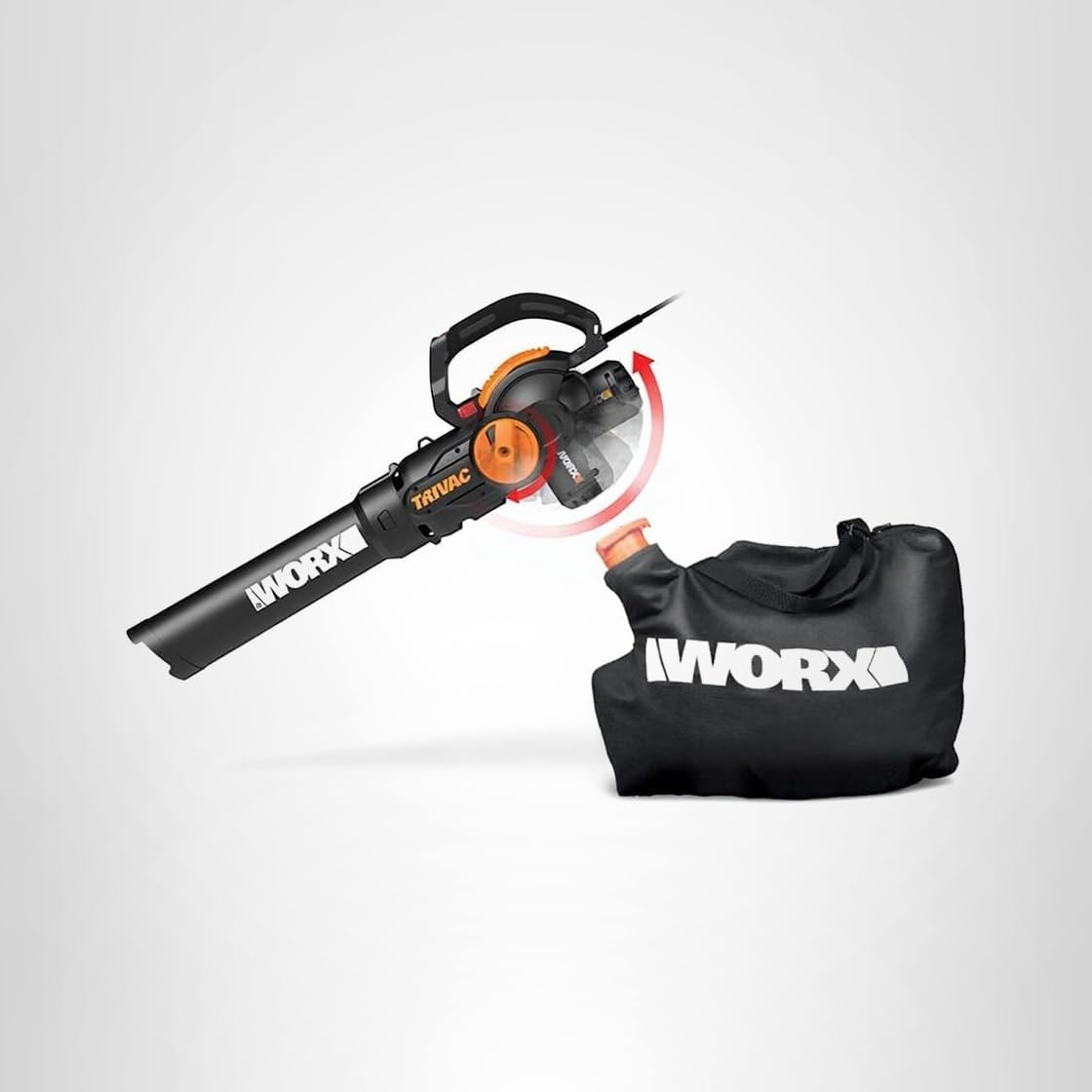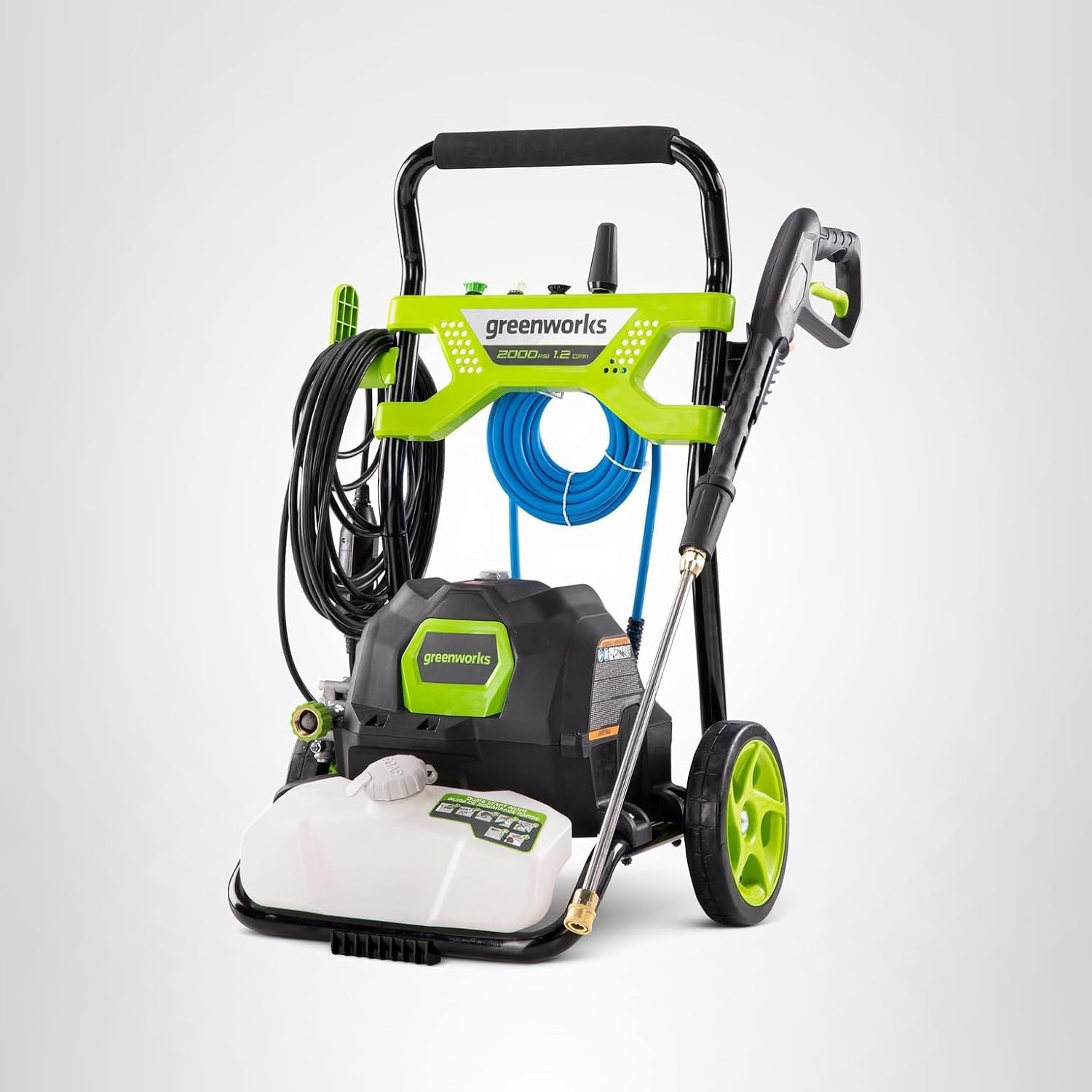The 5 Best Lawn Blowers of 2025: From Gentle Sweeps to Hurricane Force
There are few things more quintessentially American than the vibrant colors of autumn, followed swiftly by the daunting blanket of fallen leaves covering every square inch of your lawn. For generations, the only answer was the back-breaking labor of the rake. But today, the modern leaf blower has transformed this seasonal chore into a task of surprising speed and satisfaction. It’s no longer just a “leaf” blower; it’s a four-season power tool for property maintenance.
A great blower clears grass clippings from your driveway in the spring, blows sawdust out of your garage in the summer, herds mountains of leaves in the fall, and can even handle a light, dusty snowfall in the winter. But the market is a whirlwind of confusing specifications, competing power claims, and wildly different designs. How do you choose the right one? What matters more, CFM or MPH? Is a backpack blower overkill?
To answer these questions definitively, our team has tested over 20 different blowers in the past two years. We’ve cleared everything from light, dry oak leaves on pavement to heavy, wet maple leaves matted on damp grass. We measured air speed, volume, decibel levels, and—perhaps most importantly—operator fatigue over long periods. This guide is the culmination of that exhaustive, real-world testing. We will not only reveal our top 5 picks for every type of yard but also demystify the specs and teach you how to use your new blower like a seasoned pro.
CFM vs. MPH: Decoding Blower Power (The Only Guide You’ll Ever Need)
Walk into any hardware store and you’ll see two numbers plastered on every leaf blower box: CFM and MPH. Most people don’t know the difference, but understanding it is the absolute key to choosing the right tool. Let’s break it down with simple analogies.
MPH (Miles Per Hour): The “Lifting” Power
Think of MPH as a pressure washer jet. It’s a measure of how *fast* the air is moving as it exits the nozzle. High MPH is great for generating “lift.” It’s the force that gets under a single wet, sticky leaf and pries it loose from the pavement. A tool with high MPH but low CFM can feel powerful up close but lacks the ability to move a large pile.
CFM (Cubic Feet per Minute): The “Moving” Power
Think of CFM as a wide, powerful river current. It’s a measure of the *volume* of air the blower moves every minute. High CFM is the force that “herds” a huge pile of dry leaves across your yard. A tool with high CFM can move a mountain of debris, even if the air speed isn’t record-breaking. It’s the true measure of a blower’s working capacity.
Best Overall: EGO POWER+ LB7654 765 CFM Blower

| Power: | 56V (5.0Ah ARC Lithium Battery) |
| Max CFM: | 765 CFM (on Turbo) |
| Max MPH: | 200 MPH |
| Weight: | 7.6 lbs (tool only) |
| Noise Level: | ~64 dB |
| Key Feature: | Unrivaled handheld power with exceptional control. |
The Verdict: The Handheld Hurricane
The EGO LB7654 isn’t just a leaf blower; it’s an atmospheric event you can hold in your hand. It currently holds the crown for the most powerful cordless handheld blower on the market, delivering a staggering 765 CFM that rivals many gas-powered backpack models. Combined with exceptional ergonomics and user-friendly features, it’s the undisputed best overall choice for the discerning homeowner.
Our In-Depth Analysis
Real-World Power: The claimed 765 CFM isn’t just a number on a box. In our tests, engaging the Turbo Boost button creates a visible wall of air that moves a mountain of wet, matted leaves with a single, satisfying pass. It’s the kind of power that cuts your cleanup time in half. For everyday tasks, however, the real star is the variable speed dial with cruise control. You can set a low, consistent speed to gently clear out delicate flower beds without blowing away mulch, or clear dust from a garage without creating a storm. This level of granular control is what separates pro-level tools from amateur ones.
Ergonomics & Control: For a tool this powerful, EGO has done a masterful job with balance. The blower sits comfortably in hand and doesn’t create excessive wrist strain. The included tapered and flat nozzles are genuinely useful; the flat nozzle concentrates the air for prying up wet leaves, while the tapered nozzle provides maximum airflow for moving large piles. The noise level is also impressively low for the power it outputs, making it far more pleasant to use than any gas-powered alternative.
- Class-leading power that rivals gas backpack blowers
- Excellent variable speed dial and cruise control
- Well-balanced and comfortable for its power
- Includes multiple useful nozzles
- Part of the outstanding EGO 56V battery ecosystem
- Turbo mode drains the battery quickly
- Premium price point
Best Value: Ryobi 40V HP Brushless 730 CFM Blower

| Power: | 40V (Two 4.0Ah Batteries Included) |
| Max CFM: | 730 CFM |
| Max MPH: | 190 MPH |
| Weight: | ~11 lbs (with battery) |
| Noise Level: | ~57 dB |
| Key Feature: | Near-premium power and features for a mid-range price. |
The Verdict: The Power-to-Price Champion
Ryobi has built a reputation for disrupting the market, and this 730 CFM blower is their magnum opus. It delivers power figures that are hot on the heels of the premium EGO model but at a significantly lower price point. For the homeowner who wants immense power without the premium price tag, this Ryobi blower is the smartest buy in 2025.
Our In-Depth Analysis
Real-World Power: The 730 CFM is no joke. This blower is astonishingly powerful for its price. In side-by-side tests with the EGO, it was nearly as effective at moving large piles of wet leaves. It features a variable speed trigger, a turbo button, and a cruise control dial, giving you the full suite of pro-level controls. The “HP” (High Performance) brushless motor is efficient and delivers instant throttle response. We were able to clear our entire half-acre test yard on a single charge of the two included 4.0Ah batteries.
Ergonomics & Control: This is a larger and slightly heavier blower than some competitors, but it remains manageable. The main handle is comfortable, and the controls are intuitively placed. What makes it stand out is the incredibly low noise rating of just 57 dB, making it one of the quietest high-power blowers on the market—a huge win for suburban harmony. The value proposition is off the charts, delivering a near-premium experience for the DIYer’s budget.
- Incredible power and CFM for the price
- Extremely quiet operation for its class
- Includes two batteries and a charger for great value
- Full suite of controls (variable speed, turbo, cruise)
- Heavier and bulkier than premium models
- Build quality feels less robust than EGO or DEWALT
Best Lightweight Option: DEWALT 20V MAX XR Brushless Blower

| Power: | 20V (5.0Ah Battery) |
| Max CFM: | 450 CFM |
| Max MPH: | 125 MPH |
| Weight: | 7.1 lbs |
| Noise Level: | ~66 dB |
| Key Feature: | Excellent power-to-weight ratio in a compact package. |
The Verdict: The Workshop and Patio Pro
Not every job requires a hurricane. For quick cleanups on hard surfaces, clearing out the garage, or for homeowners with smaller yards, a massive, heavy blower is overkill. The DEWALT 20V MAX XR is the perfect solution. It’s lightweight, incredibly easy to handle, and has more than enough power for everyday tasks, all while being part of the massive DEWALT 20V battery platform.
Our In-Depth Analysis
Real-World Power: With 450 CFM, this blower is a significant step up from older, smaller models. It’s fantastic for its intended purpose: clearing grass clippings from sidewalks after mowing with one of the best lawn trimmers, blowing leaves off a deck or patio, or even drying your car after a wash. While it will struggle with a huge pile of wet leaves on thick grass, it handles dry leaves on hard surfaces with ease. The variable speed trigger and speed lock give you great control.
Ergonomics & Control: This is where the DEWALT shines. At just over 7 lbs, it feels feather-light and perfectly balanced. You can use it one-handed for extended periods without any fatigue. Its compact size makes it easy to store and maneuver in tight spaces. For anyone already invested in the DEWALT 20V ecosystem of power tools, this is an absolute must-have addition. It’s the “grab-and-go” blower you’ll find yourself reaching for constantly.
- Lightweight, compact, and very easy to handle
- Perfect for hard surfaces and quick cleanups
- Great build quality and durability
- Part of the huge and popular DEWALT 20V MAX system
- Not powerful enough for heavy, wet leaves on grass
- Lower CFM means it takes longer to clear large areas
Best Backpack Blower: Greenworks Pro 80V Brushless Backpack Blower

| Power: | 80V (2.5Ah Battery) |
| Max CFM: | 610 CFM |
| Max MPH: | 180 MPH |
| Weight: | 14.6 lbs |
| Noise Level: | ~71 dB |
| Key Feature: | Gas-like power and comfort for large properties. |
The Verdict: The Acreage Annihilator
When you have a large, heavily wooded property, even the most powerful handheld blower can lead to arm fatigue. A backpack blower solves this by moving the weight of the motor and battery onto your back, allowing for hours of comfortable use. The Greenworks Pro 80V model delivers true gas-equivalent power with all the benefits of battery operation, making it the top choice for homeowners with an acre or more.
Our In-Depth Analysis
Real-World Power: The 610 CFM and 180 MPH specs put this blower squarely in the professional gas-powered category. It moves a massive volume of air with incredible speed. During our tests, it made short work of a one-acre yard covered in a thick layer of fall leaves. The combination of high MPH and high CFM is perfect for lifting stubborn debris and moving it a long distance. It features a variable speed trigger, turbo button, and cruise control, all conveniently located on the joystick-style handle.
Ergonomics & Control: The harness system is comfortable and well-padded, effectively distributing the weight across your shoulders and back. We used it for over 90 minutes straight and felt no significant strain. The joystick control is intuitive, and the flexible tube provides a great range of motion. For large-scale cleanups, the comfort and sustained power of a backpack design are simply unmatched by any handheld model.
- Incredible, sustained power for large properties
- Comfortable harness for extended use
- Full-featured joystick control
- Much quieter and less maintenance than a gas backpack
- Significant investment
- Bulky to store
- Overkill for smaller yards
Best Blower/Vac/Mulcher: WORX WG509 TRIVAC

| Power: | 12 Amp Corded Electric |
| Max CFM: | 400 CFM (Blower) |
| Mulch Ratio: | 16:1 |
| Weight: | 9.5 lbs |
| Key Feature: | 3-in-1 functionality with a metal impeller. |
The Verdict: The All-in-One Cleanup Crew
For homeowners who want to do more than just push leaves around, a blower/vacuum/mulcher is an incredibly useful tool. The WORX TRIVAC stands out from the competition with its clever all-in-one tube design and a durable metal impeller. It allows you to blow leaves into a pile, vacuum them up, and shred them into a nutrient-rich mulch for your garden beds, all with one tool.
Our In-Depth Analysis
Real-World Power: As a blower, the 12-amp corded motor provides a respectable 400 CFM, which is plenty for dry leaves on small to medium-sized yards. But the vacuum and mulching functions are where it truly excels. With the flip of a switch (no tube changes needed), it converts to a powerful vacuum. The metal impeller, compared to the plastic ones on cheaper models, does a fantastic job of shredding leaves and small twigs down to a 16:1 ratio. This turns 16 bags of bulky leaves into just one bag of fine mulch.
Ergonomics & Control: The tool is lightweight and the angled nose makes it easy to get under decks and patio furniture. The collection bag is easy to attach and empty. The main drawback is that it’s a corded tool, so your range is limited. However, for those with smaller yards who want to turn their leaf problem into a garden solution, the TRIVAC is an innovative and highly effective tool. WORX’s clever designs are a hallmark of the brand, something we also noted in our Worx Landroid review.
- Convenient 3-in-1 Blower, Vacuum, and Mulcher
- Durable metal impeller shreds leaves effectively
- Easy one-touch conversion between modes
- Affordable and great for small-yard composting
- Limited by an extension cord
- Blower is not as powerful as dedicated models
- Vacuum can clog on wet leaves or large sticks
How to Use a Leaf Blower Like a Pro
Having a powerful blower is one thing; using it effectively is another. Professionals don’t just blast leaves randomly. They use a technique to “herd” them efficiently. Here’s how:
- Work With the Wind: This is the golden rule. Always blow in the same direction the wind is blowing. Fighting the wind is a losing battle that just creates more work.
- Start at the Edges: Begin at the perimeter of your lawn, flower beds, and house. Blow all the debris towards the center of the yard. Use a lower speed for delicate areas.
- Herd, Don’t Scatter: Use wide, sweeping motions to guide the leaves into a progressively larger pile, like a shepherd herding sheep. Don’t just point the blower at the middle of a pile and blast it apart. Use the air to roll the pile along.
- The Final Cleanup: Once you have one or more large piles, you can bag them or use a blower/vac to mulch them. A blower is also the perfect final step after using one of the best lawn edgers to quickly clear the resulting debris from your sidewalks and driveway.
Frequently Asked Questions
Are backpack blowers worth it for a homeowner?
For most suburban homes with less than an acre, a powerful handheld blower like the EGO or Ryobi is more than sufficient. Backpack blowers are worth considering if you have a property of 1 acre or more with many mature trees, or if you have physical limitations that make holding a tool for 30+ minutes difficult. They offer sustained power and superior comfort for very long jobs.
Can I use a leaf blower on light, fluffy snow?
Yes, absolutely! A powerful cordless blower is a fantastic tool for clearing a light dusting of snow (1-2 inches) from cars, sidewalks, and decks. It’s much faster and easier than shoveling. However, it will not be effective on heavy, wet snow.
How do I deal with wet, matted leaves?
Wet leaves are the ultimate test for a blower. To handle them effectively, you need a blower with high MPH to “lift” them and high CFM to “move” them. Use a flat or scraper nozzle if one is included. Get the nozzle close to the ground and use short, powerful bursts to break the leaves free. Once they are loosened, you can switch to a wider nozzle to move them in a pile.
Do I need a blower if I have a robotic mower?
Yes. While robotic mowers are incredible time-savers, they cannot handle a thick layer of leaves. Heavy leaf cover will block the mower’s sensors and prevent it from cutting properly. You will need a blower to clear the leaves in the fall so the mower can continue its job. This applies to all models, from the affordable units in our Worx Landroid review to the high-end machines in our guides to the best robotic lawn mowers and our Kress robotic mowers reviews.
Do blowers harm the lawn or beneficial insects?
When used properly, a blower will not harm your lawn. However, some environmental groups raise concerns about the impact on small insects and overwintering pollinators. To minimize this, avoid blowing deep into your garden beds. The concept of “leave the leaves” in your flower beds is great for insects. Use your blower to clear the turf and hard surfaces, and allow the leaves in your garden beds to break down naturally. A healthy lawn ecosystem also relies on good lawn fertilizing and targeted lawn pest control, not just surface cleanup. A blower is just one of the best lawn tools of 2025 in a complete system.
The Final Word on Power and Air
The humble leaf blower has evolved into an indispensable, year-round tool for maintaining a clean and beautiful property. The move to powerful, quiet, and maintenance-free battery technology has made them more accessible and enjoyable to use than ever before. By understanding the critical difference between CFM and MPH and choosing a tool that matches the size of your property, you can reclaim countless hours and achieve a level of clean that was once the exclusive domain of professional landscape crews.
We’re confident this guide has provided you with the expert knowledge to select the perfect blower with confidence. Now go forth and harness the power of the wind!
What’s the toughest cleanup job you’ve tackled with a blower? Share your stories in the comments below!




















